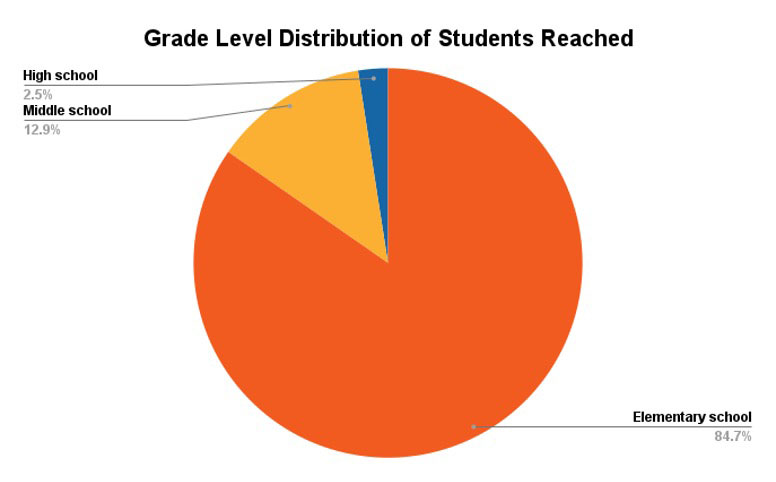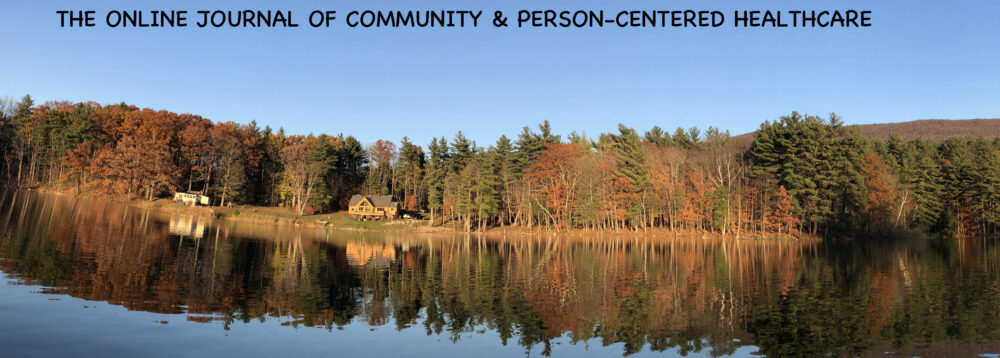Katherine Benandi,* BBA, Madelyn Schmidt, BS, Frank Winsett MD
This preprint version of the manuscript is posted prior to peer review or formal publication in a scholarly journal.
Abstract: The Block the Blaze program, a skin cancer awareness initiative created by the John Wayne Cancer Foundation, was implemented across seven schools in Galveston, Texas, delivering 27 interactive presentations and reaching 1,864 students over two years. By fostering awareness and promoting proactive sun-safe behaviors, the program aims to instill lifelong habits, reduce skin cancer prevalence, and empower individuals to prioritize early detection and prevention.
Key Words: Skin cancer prevention, health education programs, early detection, sun-safe behaviors
Introduction:
Block the Blaze, a skin cancer awareness program created by the John Wayne Cancer Foundation, aims to educate youth about the dangers of UV radiation and the importance of sun safety. The program, now in its second year, has been successfully implemented across elementary, middle, and high schools in Galveston, Texas, to foster awareness and encourage proactive sun-safe behaviors. To achieve this goal, volunteers from UTMB John Sealy School of Medicine actively participate by delivering presentations and engaging with students at local elementary schools, reinforcing the program’s mission to instill lifelong sun-safe habits. Through this program, we hope to foster a culture of awareness and proactive skin care among Galveston students.
Methods:
The program was delivered by teams of 2–3 volunteers who traveled to local schools to give 45-minute presentations. The content was tailored to different age groups:
For elementary school students, the focus was on fundamental sun safety practices, such as applying sunscreen, wearing hats, and seeking shade. Sessions incorporated animated videos and interactive elements to engage younger students. (1)
For middle and high school students, the program addressed the science of UV radiation, types of skin cancer (basal cell carcinoma, squamous cell carcinoma, and melanoma), and the ABCDEs of melanoma detection.
Discussions included the cumulative effects of sun exposure and the risks associated with artificial tanning. (1)
Results:
In its first two years of outreach in Galveston, the Block the Blaze program
successfully delivered 28 interactive, 45-minute presentations to students in seven schools, reaching a total of 1,864 students. Elementary school students made up the majority of our outreach, with 1,578 participants, while 240 middle school students and 46 high school students were also engaged (Figure), underscoring the opportunity to increase efforts in reaching older age groups. Based on observed engagement and feedback from participants and educators, the program is anticipated to generate several key outcomes.
Figure

The program is expected to lead to increased awareness, as students actively participated and showed curiosity during the presentations, reflecting a greater understanding of skin cancer risks and prevention strategies. It also encouraged behavioral changes by emphasizing practical sun safety habits, such as using sunscreen, wearing protective clothing, and avoiding tanning beds; many students expressed interest in incorporating these practices into their lives.
Additionally, educators observed that the presentations sparked conversations among students, which they might share with their families, expanding the program’s impact beyond th classroom. Finally, by engaging a younger audience, the program seeks to instill lifelong sun-safe habits, potentially reducing the future prevalence of skin cancer in the Galveston area and contributing to improved community health.
Discussion:
Skin cancer is the most common cancer in the United States, affecting one in five American during their lifetime. 2 Since most cases are linked to ultraviolet (UV) exposure, preventive measures such as consistent sun protection and avoiding tanning beds are vital for reducing risk (3) . Early detection is equally important, as basal cell carcinoma (BCC) and squamous cell carcinoma (SCC), the two most common types of skin cancer, are highly treatable when identified early, though both can be locally invasive if left untreated. (3 , 4)
Melanoma, the deadliest form of skin cancer, also underscores the need for vigilance, with a five-year survival rate of around 94% for early-detected cases. (3, 5) The five-year survival rate for melanoma decreases significantly when not detected early. For melanoma that has spread to nearby lymph nodes, the survival rate is approximately 74%, and for melanoma that has metastasized to distant lymph nodes or other organs, the survival rate drops to about 35%. (3, 6) These facts highlight the critical role of proactive measures, such as regular self-examinations and consistent sun protection, not only in preventing skin cancer but also in enabling early recognition, thus reducing the risk of advanced disease.
The implementation of Block the Blaze in Galveston has built on the success of similar community-based interventions, which have been instrumental in enhancing adherence to sun-protective behaviors. Educational programs and outreach initiatives have significantly improved individuals’ understanding of UV risks and their commitment to preventive measures, such as regular sunscreen use, avoiding tanning beds, and seeking shade during peak UV hours. For instance, the “SunSafe in the Middle School Years” program implemented a multicomponent community-wide intervention targeting early adolescents. (7) This initiative led to increased sun protection behaviors among participants, demonstrating the effectiveness of community-based strategies in promoting sun safety. 7 Additionally, the “Camp Sun Safe” intervention, conducted at summer camps, provided sun safety education and resources to campers and staff. 8 The program resulted in improved sun protection practices, highlighting the impact of educational outreach in community settings. (8) School-based health education programs have also shown success in fostering long-term behavior change and improving health outcomes. A systematic review of such interventions found that comprehensive approaches addressing multiple health behaviors can lead to sustained improvements in students’ health practices. (9)
Conclusion:
The Block the Blaze program successfully engaged students across multiple age groups, fostering awareness about skin cancer and encouraging sun-safe behaviors. The enthusiasm and engagement demonstrated by students, as well as the feedback from educators, highlight the potential for lasting behavioral changes that could reduce the burden of skin cancer in the community.
Looking ahead, the program seeks to broaden its reach by focusing on increased engagement with middle and high schools in Galveston, recognizing the need to address age-specific risks and behaviors associated with older students. We also aim to implement follow-up assessments to evaluate the program’s long-term effectiveness in fostering behavioral changes, such as consistent sunscreen use and regular skin self-examinations. These assessments will help identify areas for improvement, ensure the sustainability of sun-safe habits, and provide valuable data to enhance the program’s impact. By fostering a culture of sun safety and early detection, Block the Blaze aspires to make a sustained impact on public health in the Galveston area and beyond, empowering individuals to
take control of their skin health and reduce their risk of skin cancer.
References:
- John Wayne Cancer Foundation. Block the Blaze: Skin Cancer Education and Prevention Program. John Wayne Cancer Foundation. Accessed November 25, 2024.
https://johnwayne.org/pages/new-block-the-blaze. - Guy GP Jr, Thomas CC, Thompson T, et al. Vital signs: melanoma incidence and mortality trends and projections—United States, 1982-2030. MMWR Morb Mortal Wkly
Rep. 2015;64(21):591-596. - Cancer Facts & Figures 2024. American Cancer Society. Accessed March 5, 2024.
https://www.cancer.org/content/dam/cancer-org/research/cancer-facts-and-statistics/annual-cancer-facts-and-figures/2024/2024-cancer-facts-and-figures-acs.pdf. - Key Statistics for Basal and Squamous Cell Skin Cancers. American Cancer Society. Updated October 31, 2023. Accessed June 6, 2024.
https://www.cancer.org/cancer/types/basal-and-squamous-cell-skin-cancer/about/key-
statistics.html. - United States Cancer Statistics: Data Visualizations. Centers for Disease Control and Prevention. Accessed May 23, 2024. https://gis.cdc.gov/Cancer/USCS/#/Trends/.
- Rogers HW, Weinstock MA, Feldman SR, Coldiron BM. Incidence Estimate of Nonmelanoma Skin Cancer (Keratinocyte Carcinomas) in the U.S. Population, 2012.
JAMA Dermatol. Oct 2015;151(10):1081-6. doi:10.1001/jamadermatol.2015.1187. - Olson AL, Gaffney C, Starr P, Gibson JJ, Cole BF, Dietrich AJ. SunSafe in the Middle School Years: a community-wide intervention to change early-adolescent sun protection.
Pediatrics. 2007;119(1):e247-e256. doi:10.1542/peds.2006-1579. - Tracey VA, Saussy KP, Witt JG, Haugh AM, Stumpf BJ. Camp Sun Safe: A community-level sun safety intervention. J Am Acad Dermatol. 2019;80(6):1764-1766.
doi:10.1016/j.jaad.2018.09.022. - Mukamana O, Johri M. What is known about school-based interventions for healthpromotion and their impact in developing countries? A scoping review of the literature.
Health Educ Res. 2016;31(5):587-602. doi:10.1093/her/cyw040.
Author Bio: Katherine Benandi, BBA, MPH, is a medical student at the University of Texas Medical Branch John Sealy School of Medicine with a background in public health, dermatology, and health education. In addition to leading UTMB’s Block the Blaze chapter, she serves as a student ambassador and clinical intern at St. Vincent’s Clinic. Katherine is passionate about preventive care, patient communication, and supporting students as they navigate their path into medicine.
